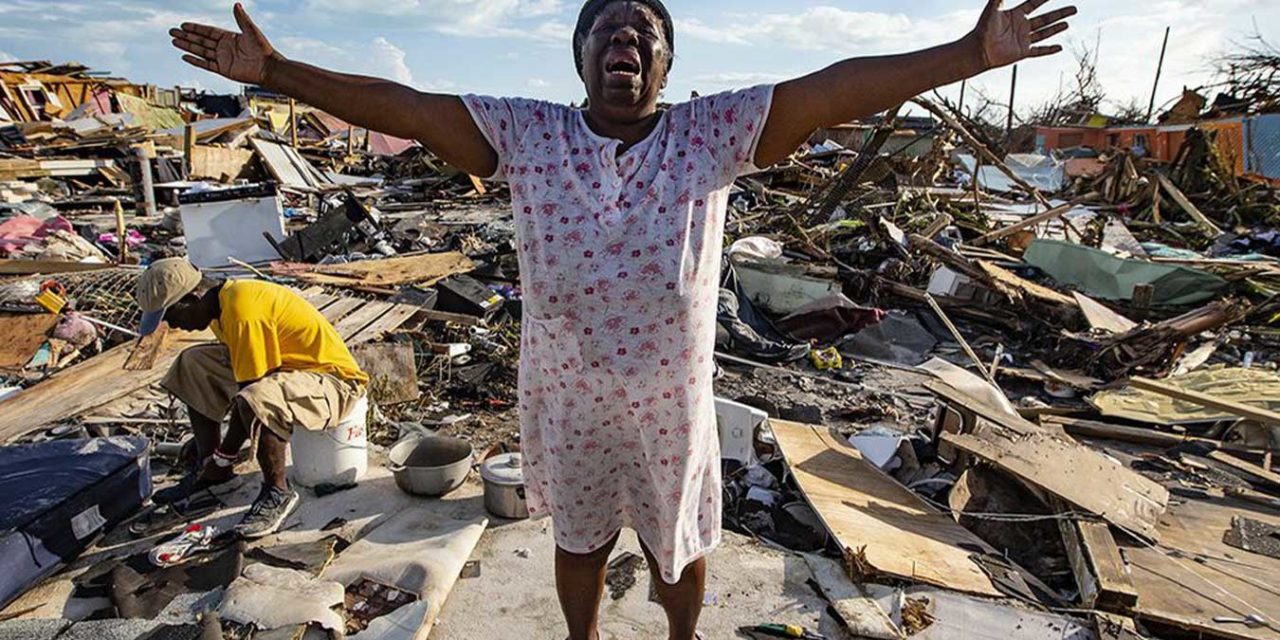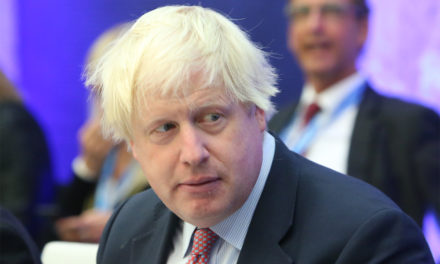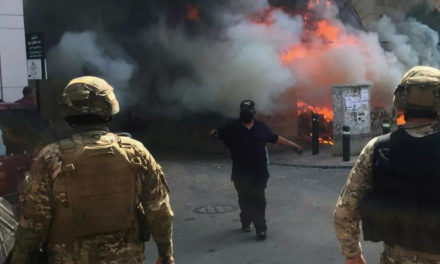So far, the number of people who have lost their lives from Dorian is 30 but the Bahamas government has warned that it is likely to increase significantly as the aid efforts are stepped up on the battered islands.
Government officials have said that hundreds and possibly thousands of people are still unaccounted for in the Abacos Islands and in Grand Bahama, the northern part of the archipelago that was worst hit by Dorian.
“The public needs to prepare for unimaginable information about the death toll and the human suffering,” the health minister Duane Sands, told local radio on Thursday.
Aerial images of Great Abaco show that the island is virtually uninhabitable. Local media report that bodies are piled up, and that there is no water, power or food and that locals have formed militias to prevent looting.
In the images, debris can be seen everywhere including large, heavy items like boats, cars and shipping containers that have been lifted up by the storm surge and then deposited inland.
One of the worst affected areas was a small shanty town community of Haitian immigrants on Abaco. Their poorly built dwellings were all reduced to splinters and nine bodies have already been found there in the debris.
A delegation of Caribbean leaders has arrived at Bahamas National Emergency Management Agency in the capital Nassau for a flyover to see the terrible level of destruction on the Abaco Islands.
Mia Mottley, the president of Barbados, said that the strength and severity of Dorian are linked to climate change and that the Caribbean is bearing the brunt of something they haven’t caused. This is a message that has also been voiced by other Caribbean countries, particularly Dominica.
“We are on the frontline of the consequences of climate change but we don’t cause it and the vulnerability that attaches therefore to us is a matter we’re trying to get the international community to deal with consistently,” she said.
Aid Operation Ramps Up
Efforts to deliver aid are being increased. 76,000 people on the Bahaman archipelago are in urgent need of food, freshwater and shelter and planes and helicopters have been flying in what they can. However, efforts have been hampered by the fact that the only international airport on Grand Bahama has been virtually destroyed.
The Royal Navy is also helping aid operations with RFA Mount Bay, from the Royal Fleet Auxiliary which has Royal Marines from 24 commando on board as well as soldiers from the British Army’s 17 Port and Maritime Regiment.
The US Coast Guard is also involved in search and rescue missions and has Seven MH-60 Jayhawk helicopters and three MH-65 Dolphin helicopters in the Bahamas, which so far have rescued 201 residents.
The UN Food Programme said that eight tonnes of ready-to-eat meals, generators, and storage units are being flown into the Bahamas from Panama. The UN has already allocated USD$5.4 million for a planned three-month aid operation there.
The International Red Cross has said that they think 45% of all homes on Grand Bahama and the Abacos have been destroyed, with the situation slightly worse on the Abacos Islands.
In Abaco, the government has taken delivery of 200 body bags, although the official death toll still stands at 30.
Dorian Moves To US
Dorian is now off the coast of North Carolina according to the US National Hurricane Center (NHC) and has been downgraded to a category 2 hurricane with winds of about 110mph, as opposed to the 200 mph winds that battered the northern Bahamas for over two days.
By Friday Morning around 300,000 homes and businesses in North and South Carolina were without power.
Dorian is expected to move northeast towards Novia Scotia in Canada over the weekend. Coastal areas of south and North Carolina will still be at risk of dangerous storm surges on Friday.
As global sea temperatures continue to rise because of climate change, hurricanes will get stronger and move slower, as was seen in the Bahamas with Dorian. Storm surges will also reach further inland as sea levels rise.
Photo from Vox
- Why is California So at Risk from Wildfires? - 13th November 2019
- Carbon Offsetting is Growing but Does it Make a Difference? - 11th November 2019
- Three Confirmed Dead as Australia Prepares for “Catastrophic” Bushfires - 11th November 2019






